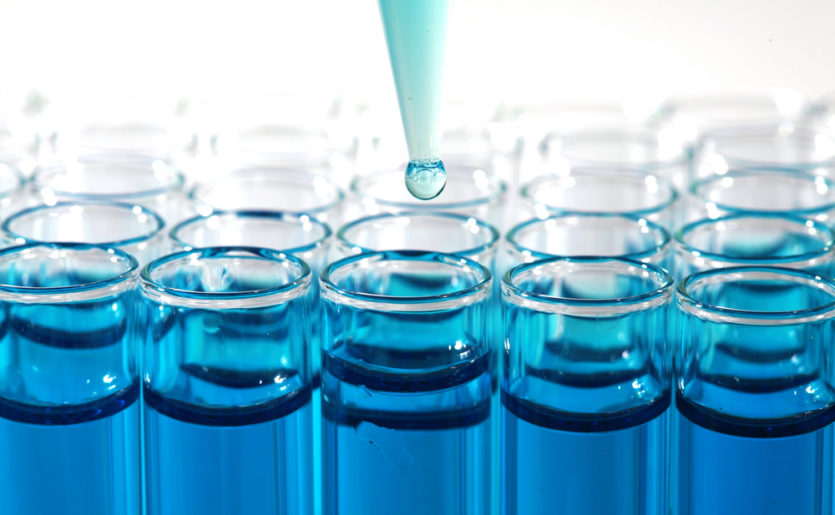In April, a team of experts led by scientists at Massachusetts General Hospital, announced groundbreaking study results — the identification of 13 new gene mutations that contribute to Alzheimer’s disease. The discovery revealed important connections between the disease and damage to synapses, the junctions that transmit information across neural networks. The new information will help identify drugs that can repair synapses. These repairs may also restore neuroplasticity, the ability of neurons to reorganize the brain’s neural network and allow cognitive functions to continue at a healthy level.
“Identifying less-common gene mutations that increase the risk for Alzheimer’s disease is important because they may hold critical information about the biology of the disease.”
Dr. Tanzi: A Pioneer and Leader
Rudolph Tanzi, PhD, vice chair of Neurology, director of the hospital’s Genetics and Aging Research Unit and co-director of Mass General’s McCance Center for Brain Health, led this study along with Dmitry Prokopenko, PhD, of the McCance Center, researchers from the Harvard T. H. Chan School of Public Health and Beth Israel Deaconess Medical Center.

Throughout his career, Dr. Tanzi has pioneered research on the genetic origins of this debilitating neurological disease, including co-discovering the first genes associated with Alzheimer’s, including a form of Alzheimer’s that runs in families; and the appearance of chronic inflammation in the brain as a significant risk factor.
The severity of the disease, however, is most closely related to the loss of synapses, but no clear genetic link between the disease and synapses had been identified — until now.
A Revolutionary Approach to Finding Rare Mutations
Alzheimer’s genes are typically identified through genome-wide association studies, which scan the genomes of Alzheimer’s patients to find variants that occur more frequently than in the general population. But this method rarely turns up uncommon mutations. Dr. Tanzi’s team decided to perform whole-genome sequencing on 2,247 people from 605 families who have multiple members with Alzheimer’s. They also studied genomic data from an additional 1,669 people.

“Identifying less-common gene mutations that increase the risk for Alzheimer’s disease is important because they may hold critical information about the biology of the disease,” says Dr. Tanzi. “Rare gene variants are the dark matter of the human genome, and there are lots of them: Of the three billion pairs of nucleotide bases that form a complete set of DNA, each person has 50 to 60 million gene variants — and 77% are rare.”
Dr. Prokopenko, the study’s lead author, says the discovery of these new variants reinforces the importance of whole genome sequencing as a more comprehensive approach to revealing rare genomic mutations and advancing our understanding of the disease biology. “This paper [published in Alzheimer’s & Dementia: The Journal of the Alzheimer’s Association] brings us to the next stage of disease-gene discovery by allowing us to look at the entire sequence of the human genome and assess the rare genomic variants, which we couldn’t do before.”
“All this work is done with an eye toward accelerating the development of drugs that will make a meaningful difference to our patients.”
As Dr. Prokopenko continues to evaluate genomic variants related to Alzheimer’s disease, Dr. Tanzi and his colleagues will use the 3D cell cultures and brain organoids they have developed that mimic Alzheimer’s to study the behavior of the 13 newly identified mutations. They believe their discoveries could point the way to new drugs to treat the disease.
At Mass General, we have a great, collaborative process for evaluating drugs from the cellular level to patient trials,” Dr. Tanzi says. “In my lab we test therapies in our “Alzheimer’s in a dish” model. We are looking at all kinds of options — nutritional supplements, as well as repurposing drugs with FDA-approval for other uses. Then we work with our colleagues in the Clinical Trials Research Unit to design new platforms that will allow us to test multiple drugs at once. All this work is done with an eye toward accelerating the development of drugs that will make a meaningful difference to our patients — slowing, reversing, and ultimately, preventing Alzheimer’s disease.”
The Power of Philanthropy
These genomic breakthroughs are funded in part by the Cure Alzheimer’s Fund, a non-profit organization dedicated to funding Alzheimer’s disease research. This discovery at the genomic level is a critical first step to developing effective therapies to reduce the burden of Alzheimer’s disease.
Philanthropy is essential for the successful next phase of research: using the variants to test drugs that might correct their behavior; identifying markers of disease progression so therapeutic intervention can happen before damage is done; and developing therapies that can repair the damage to synapses so that the neural networks can maintain effective communication. Mass General’s teams are ready to explore every promising lead but need your generous partnership to advance efforts to find cures for this devastating disease.
To make a donation to Alzheimer’s disease research at Mass General, please click here. For more information, please contact us.

This story is just one example of the groundbreaking efforts taking place at Mass General, home to the largest hospital-based research enterprise in the U.S. — the Mass General Research Institute. The Research Institute encompasses and provides support to thousands of scientists, hundreds of laboratories, and helps to guide, connect and promote this unrivaled community of investigators as they advance the future of medicine, from the bench to the bedside, to the community and world.





